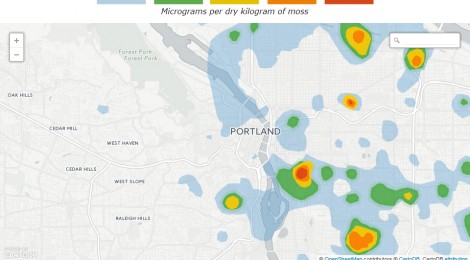
Portland’s toxic air: What you need to know about pollution hot spots
http://video-embed.oregonlive.com/services/player/bcpid1949055967001?bctid=4765186566001&bckey=AQ~~,AAAAPLpuSqE~,a1DdoZJH5WQo4iWaJj1w_CktvJfhQVVG
pollution hot spots
![]() By
By
Follow on Twitter
on February 22, 2016 at 5:00 AM, updated February 22, 2016 at 7:42 AM
PORTLAND’S TOXIC AIR
- Portland’s toxic air: What you need to know about pollution hot spots
- Portland’s toxic hotspots discovered as an after-thought
- Portland pollution: How does it affect you?
- Oregon warns home gardeners, Portland leaders lash out at state pollution response
- Don’t eat backyard vegetables near Portland glass factories, officials warn
On Feb. 3, Oregon officials announced they’d found high levels of the hazardous metals arsenic and cadmium in the air near Bullseye Glass in Southeast Portland: 159 times the safety goal for arsenic, and 49 times the safety goal for cadmium.
More toxic pollutants, more neighborhood hot spots and more potential sources have emerged since, prompting Oregon’s two U.S. senators to call the situation a “public health emergency.”
Here’s a quick rundown of what we know has happened so far and will happen in days ahead.
The latest developments
— The state advised the roughly 10,000 people who live within a half mile of Bullseye or Uruboros not to eat vegetables from their gardens.
— Oregon health officials also offered to pay for testing residents’ urine for heavy metals if they cannot afford it themselves.
— Portland Mayor Charlie Hales and Multnomah County Chair Deborah Kafourysaid they are exploring an air pollution authority for Portland independent of state control.
— The head of Oregon’s Department of Environmental Quality, Dick Pedersen,acknowledged at a community meeting that “we as an agency are not doing enough” to prevent pollution from these types of factories.
What you can do
In addition to not eating vegetables from gardens, authorities say residents have described the potential risks and precautions people can take if they have concerns.
Why this is coming up now
Air sensors run by the Oregon Department of Environmental Quality since at least 2004 have shown that Portland’s air generally contains too much arsenic, cadmium and other metals. No one had pinpointed the worst areas.
Then, two U.S. Forest Service scientists who’d collected hundreds of moss samples citywide decided to test them for heavy metals. The resulting maps showed intensive cadmium levels near Bullseye. The state got the news in May and began work in October to verify the moss data using an air monitor. Results came back Jan. 20.
The areas affected
The hot spots that state regulators are focused on arenear two glass manufacturers, Bullseye in Southeast and Uroboros in North Portland, which used heavy metals as colorants. Regulators established cadmium and carcinogenic hexavalent chromium as concerns at both locations; arsenic was an additional issue at Bullseye.
Citywide maps released since Feb. 3 have shownhot spots for arsenic, lead and nickel with no apparent connection to the glass makers. The state would need soil and air monitoring, as performed near Bullseye, to establish risk levels at these other Portland locations.
What regulators are doing
Bullseye and Uroboros voluntarily have stopped using chromium, cadmium and arsenic (Uroboros said it hasn’t used arsenic for years) at the urging of regulators and Gov. Kate Brown. The Oregon Department of Environmental Quality has said it is examining additional regulatory controls on toxic metal polluters.
How serious is this?
Experts estimate that a lifetime of breathing the volume of metals found in the Southeast Portland hotspot near Bullseye would result in one cancer 1 cancer case for every 4,807 people. The state’s goal is 1 in a million.
How was it allowed to happen?
The federal Clean Air Actmandates that metropolitan areas clean up unsafe levels of major pollutants such as ozone and nitrogen oxide. It doesn’t set mandatory targets for emissions of hazardous airborne chemicals like cadmium or arsenic.
Controls on the emission of heavy metals under the may contain a loophole for glass makers, which U.S. Sen Ron Wyden, D-Ore., says should be closed. Butactivists and critics in local government say the state Department of Environmental Quality also could have been far more aggressive in attacking the problem of airborne toxic metals, and Gov. Kate Brown has acknowledged that the agency has lost the public’s confidence on air pollution.
What’s next
The state environmental quality department has collected soil samples near Bullseye to see if metals have accumulated. Similar testing is expected near Uroboros, near the east end of the Fremont Bridge.
It is unclear what the state is doing about lead, arsenic and nickel hot spots elsewhere that do not appear associated with the two Portland glass manufacturers. The agency says it has no plans for testing near other glass makers statewide.


